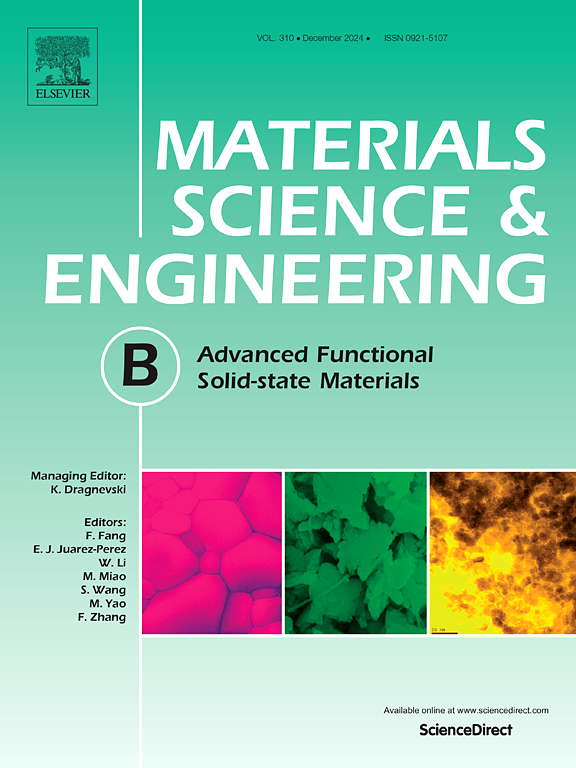Interlayer modulation of the lepidocrocite-type titanate via intercalation of the tetraalkylammonium ions for high-performance sodium-ion batteries
IF 3.9
3区 材料科学
Q2 MATERIALS SCIENCE, MULTIDISCIPLINARY
引用次数: 0
Abstract
Sodium-ion batteries (SIBs) are an alternative to lithium-ion batteries (LIBs) due to the low cost. However, the large ionic radius of Na-ion hinders their efficient diffusion within the hosts of SIBs. Interlayer expansion of intercalation hosts is a option to increase the mobility of sodium ions. In this paper, tetraalkylammonium ions of different chain lengths were inserted into the lepidocrocite-type titanate to obtain interlayer modulation for investigation of their potential as anodes in SIBs. Surprisingly, the biggest interlayer spacing produced by the longer chain length of tetrabutylammonium ions does not give the best performance. The tetraethylammonium intercalated layered titanate surpasses others with a specific capacity of 175 mAh g−1 at 0.1 A g−1. The phenomena could be explained by variation of the charge transfer resistance and and diffusion coefficient induced by changing guest ion species. This work provides a useful guide for developing high-efficiency layered electrode materials for SIBs.
高性能钠离子电池用四烷基铵离子插层对蛭石型钛酸盐的层间调制
钠离子电池(SIBs)由于成本低而成为锂离子电池(lib)的替代品。然而,钠离子的大离子半径阻碍了它们在sib宿主体内的有效扩散。层间扩展的插入主体是一个选择,以增加迁移率的钠离子。本文将不同链长的四烷基铵离子插入到蛭石型钛酸盐中,获得层间调制,以研究其作为sib阳极的潜力。令人惊讶的是,四丁基铵离子链长所产生的最大层间距并不能提供最好的性能。四乙基铵插层钛酸盐在0.1 a g−1时的比容量为175 mAh g−1,优于其他材料。这种现象可以用客体离子种类的变化引起电荷转移电阻和扩散系数的变化来解释。这项工作为开发高效的sib层状电极材料提供了有益的指导。
本文章由计算机程序翻译,如有差异,请以英文原文为准。
求助全文
约1分钟内获得全文
求助全文
来源期刊

Materials Science and Engineering: B
工程技术-材料科学:综合
CiteScore
5.60
自引率
2.80%
发文量
481
审稿时长
3.5 months
期刊介绍:
The journal provides an international medium for the publication of theoretical and experimental studies and reviews related to the electronic, electrochemical, ionic, magnetic, optical, and biosensing properties of solid state materials in bulk, thin film and particulate forms. Papers dealing with synthesis, processing, characterization, structure, physical properties and computational aspects of nano-crystalline, crystalline, amorphous and glassy forms of ceramics, semiconductors, layered insertion compounds, low-dimensional compounds and systems, fast-ion conductors, polymers and dielectrics are viewed as suitable for publication. Articles focused on nano-structured aspects of these advanced solid-state materials will also be considered suitable.
 求助内容:
求助内容: 应助结果提醒方式:
应助结果提醒方式:


